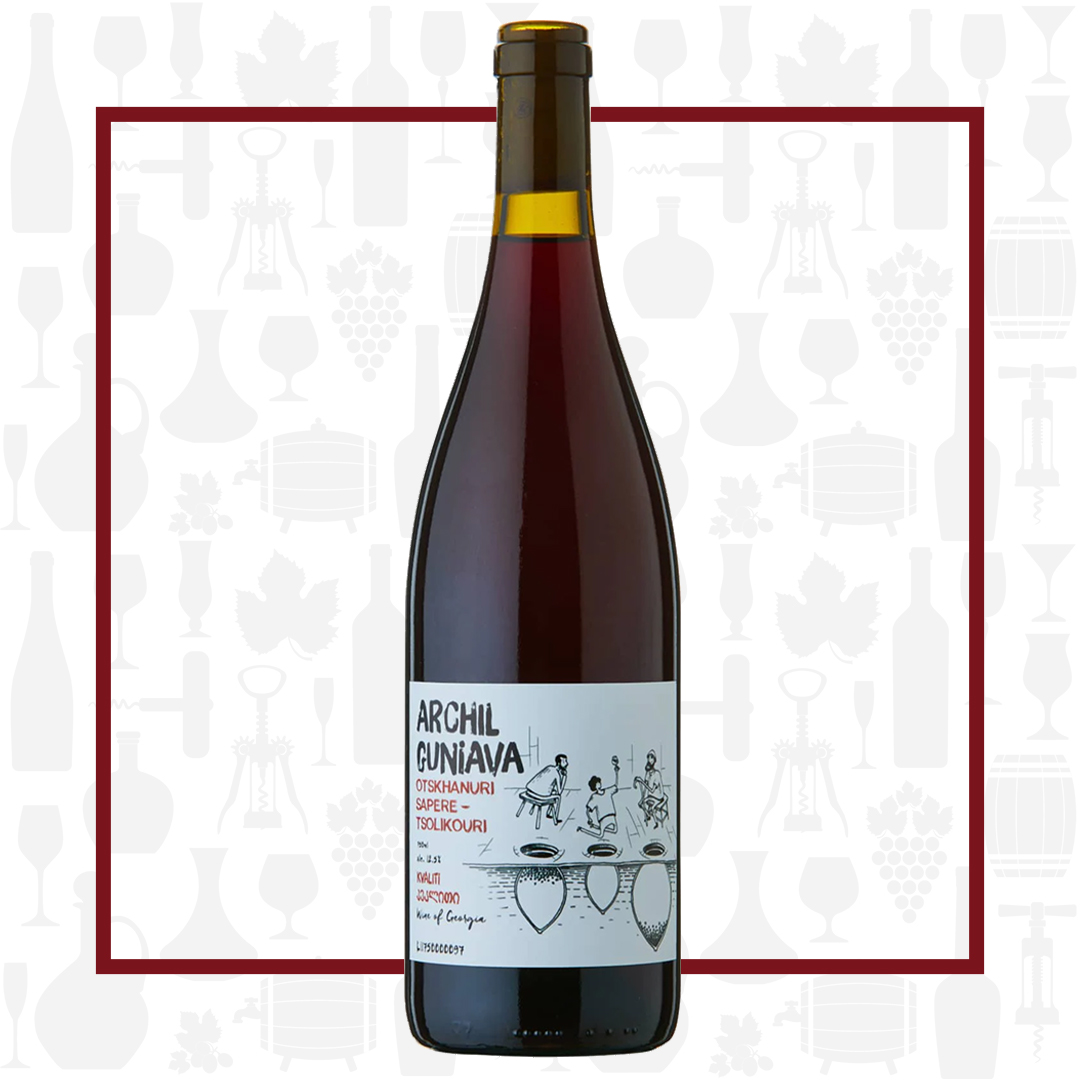Cellar Profile
Located near the tiny village of Kvaliti, in Central Imerteti, Archil Guniava’s family has been supplying wine to the region, including the nearby industrial town of Zestafoni, for over a century. His grandfather built the century-old cellar and winery which remains in use, in its antique state, today. Utilizing completely natural, low-intervention methods in the vineyard and winery, Archil lovingly works with indigenous and autochthonous varieties only found in this small pocket of Georgia. These are important, as all vitis vinifera varieties used today can trace their lineage back to this area of the Caucasus Mountains. Archil has the only known plantings in the world of Mgaloblishvili — an ancient, forgotten variety that his daughter discovered and resurrected — from which he crafts a tiny production each year. All of his wines are made in the ancient, traditional Georgian method of kvevri-aging, where direct-pressed juice is left to naturally evolve over the winter in large, earthen (clay) amphorae buried in the ground. The heads and lid of the kvevri are the only thing showing above ground and periodically throughout the winter a long paddle is used to stir the lees. All wines undergo spontaneous fermentation using natural yeast and are bottled without any fining or filtration. They are known for their intense, saline minerality which comes from the generous slab of limestone on which the vineyard is found. These are fresh, clean and stable, despite being created in a truly natural way. Only 11,000 highly sought-after bottles are produced each year.
Region
Imereti, situated along the upper reaches of the Rioni River, is one of the most diverse regions in Georgia, with a constantly changing topography. Winemaking has been practiced in the region for millennia and the traditional Imeretian method of utilizing kvevri is still widely used today. Archil Guniava Wine Cellar is located in the western area of Imereti, close to the banks of the Kvirila River and the industrial town of Zestafoni. This part of the region sits on a massive slab of limestone, covered by a thick layer of clay. During the Soviet occupation, there was little investment into the wineries and many vineyards fell into a state of disrepair.
Vineyard
These family vineyards sit at 300 masl, just south of the Kvirila River. Proximity to the river keeps the warm, humid air from the Black Sea from causing excessive mildew and rot. The vineyards sit on rich deposits of clay, with limestone underneath and are always dry-farmed. The gnarly old vines here are bush-trained for the most part, some standing over 6 feet high, with the grapes shielded from the heat of the day by a generous canopy.
Winemaking
The two grape varieties are harvested simultaneously in a field blend. The grapes are hand-sorted at the tiny winery, then pressed into beeswax lined kvevri – large earthenware pots similar to amphorae – that are buried in the cool clay with just their tops showing. Fermentation is long and slow using only indigenous yeasts; the cool clay keeps the temperature of the must from rising too quickly. The cap is punched down by hand during fermentation until sufficient colour has been extracted. The wine is then separated from the skins and the kvevri is capped. It ages in earth for 6 months before being racked into another kvevri for a further 6 months of aging before being bottled, unfined and unfiltered.
Varieties
Otskhanuri Sapere is a dark blue grape variety with extremely thick skins. Fully resistant to rot, including botrytis cinerea, it is particularly suited for the humid Western Georgian autumns. It yields wines that are grippy and tannic in youth, so is often blended with thinner-skinned white varieties to mellow the tannins. Tsolikouri is an aromatic white Imeretian variety that gives racy, flavourful white wines. It is used here to tame the grippy Otskhanuri Sapere.
Tasting Notes
Dark purple and slightly hazy, this natural red has explosive aromas of black plum, red cherry, earth and oregano. On the palate, it is medium-bodied, but with some prodigious acidity and some grippy tannic backbone. The cherry continues through on the palate, along with notes of blackberry, cassis, mocha, baking spice and black tea. There are some funkier notes here as well, speaking to the wild and untamed Natural nature. This needs some protein and fat to help moderate the tannins – perhaps a rack of lamb or venison steaks.

